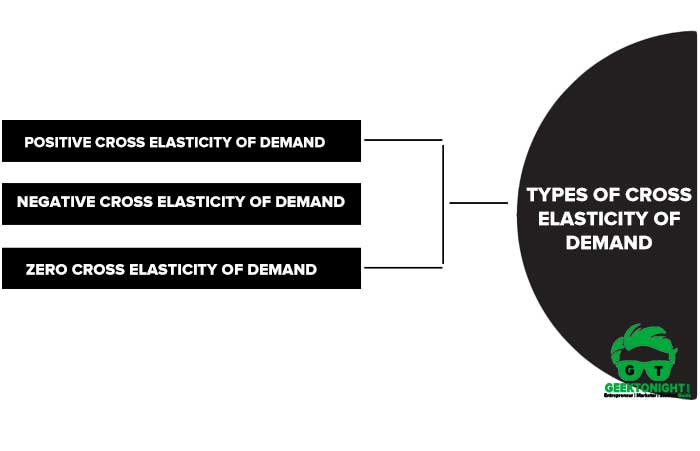What is Cross Elasticity of Demand?
The cross elasticity of demand can be defined as a measure of a proportionate change in the demand for goods as a result of a change in the price of related goods.

Table of Content
Also Read: Elasticity of Demand
Cross Price Elasticity of Demand Definition
The cross elasticity of demand is the proportional change in the quantity demanded of good X divided by the proportional change in the price of the related good Y.
Ferguson
Cross Elasticity of Demand Formula
The cross elasticity of demand can be measured as:

Where,
Percentage change in quantity demanded of X=

Percentage change in price of Y=

Thus, mathematically, the cross elasticity of demand is stated as:

Here,
ec is the cross elasticity of demand
QX = Original quantity demanded of product X
ΔQX = Change in quantity demanded of product X
Py = Original price of product Y
ΔPy = Change in the price of product Y
Cross Elasticity of Demand Example
Let us understand the concept of cross elasticity of demand with the help of an example.
Example: Assume that the quantity demanded for detergent cakes has increased from 500 units to 600 units with an increase in the price of detergent powder from ₹150 to ₹200. Calculate the cross elasticity of demand between two products.
Solution: Given that
X = Detergent cakes
Y = Detergent powders
Qx = 500
ΔQx = 100(600-500)
Py = 150
ΔPy = 50
Also Read: Income Elasticity of Demand
Types of Cross Elasticity of Demand
Cross elasticity of demand can be categorised into three types, which are as follows:
- Positive cross elasticity of demand
- Negative cross elasticity of demand
- Zero cross elasticity of demand

Positive cross elasticity of demand
When an increase in the price of a related product results in an increase in the demand for the main product and vice versa, the cross elasticity of demand is said to be positive. Cross-elasticity of demand is positive in the case of substitute goods.
For example, the quantity demanded tea has increased from 200 units to 300 units with an increase in the price of coffee from ₹25 to ₹30.
In this case, the cross elasticity would be:
ec = [ (ΔQx/ ΔPy) × (Py / Qx) ]
Where,
Py = ₹25
Qx = 200
ΔQx = Qx1 – ΔQx = 300 – 200 = 100 units
Similarly,
ΔPy = Py1 – Py= ₹30 – ₹25 = ₹5
Substituting the values in the formula:
ec = 100/5 × 25/200 = 2.5 > 1.
Here, the cross elasticity is positive.
Negative cross elasticity of demand
When an increase in the price of a related product results in the decrease of the demand of the main product and vice versa, the negative elasticity of demand is said to be negative. In complementary goods, cross elasticity of goods is negative.
For example, if the price of butter is increased from 20 to 25, the demand for bread is decreased from 200 units to 125 units. In such a case, cross elasticity will be calculated as:
ec = ΔQX/ ΔPY × PY/QX
Where,
PY = ₹20
QX = 200 units
ΔQX = QX1 – QX= 125 – 200= – 75 units
Similarly,
ΔPY = PY1 – PY = ₹25 – ₹20 = ₹5
Substituting the values in the formula,
ec = -75/5 × 20/200 = – 1.5 <1
Thus, cross elasticity is negative.
Zero cross elasticity of demand
When a proportionate change in the price of a related product does not bring any change in the demand for the main product, the negative elasticity of demand is said to be negative. In simple words, cross elasticity is zero in case of independent goods. In this case, it becomes zero.
By studying the concept of cross elasticity of demand, organisations can forecast the effect of change in the price of a good on the demand for its substitutes and complementary goods.
Thus, it helps organisations in making pricing decisions by determining the expected change in the demand for its substitutes and complementary goods. Moreover, it helps an organisation to anticipate the degree of competition in the market.
Also Read: Price Elasticity of Demand
Business Economics Tutorial
(Click on Topic to Read)
Go On, Share article with Friends
Did we miss something in Business Economics Tutorial? Come on! Tell us what you think about our article on Cross Elasticity of Demand | Business Economics in the comments section.
Business Economics Tutorial
(Click on Topic to Read)












